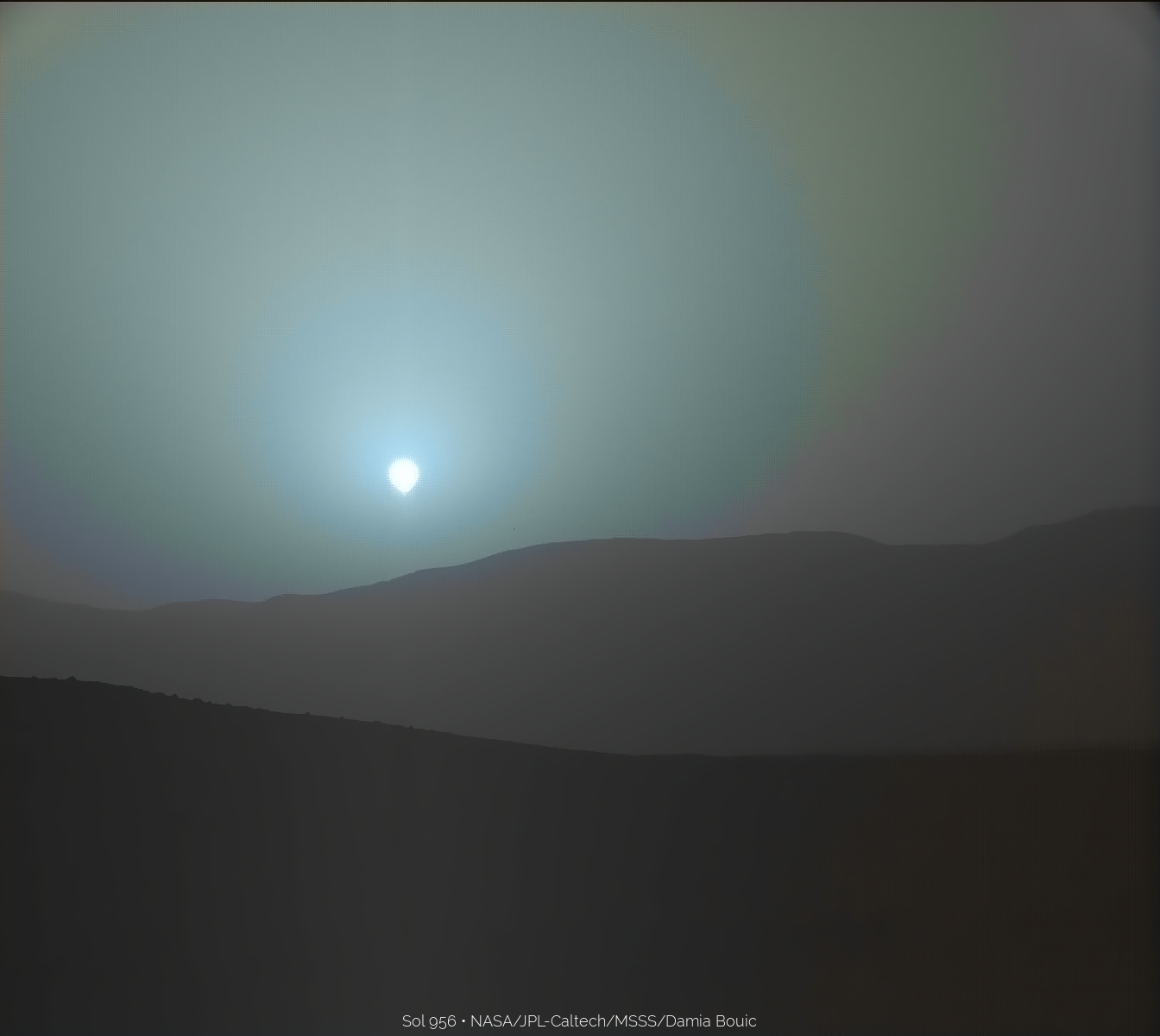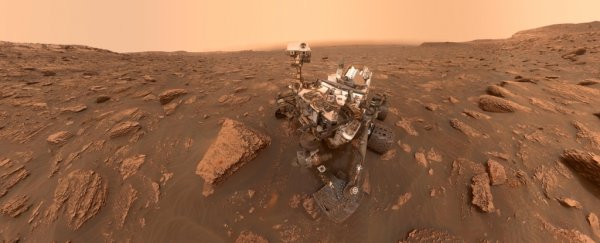On 6 August 2012, after an epic six-month journey, NASA rover Curiosity finally arrived at her new home on Mars. This week marks seven Earth years since touchdown, and we're celebrating Curiosity's Landing Day with some of the marvels it has brought us.
It's an isolated existence for the little rover, all alone in the Gale Crater. In fact, it's the only active rover on the entire planet, after Opportunity, which lasted 15 years, was declared lost to a monster storm earlier this year (InSight is a non-mobile lander, not a rover).
Curiosity is having an amazing run, though. The nuclear-powered rover was only planned for a two-year mission, but it was doing so well that the mission was granted an indefinite extension in December 2012.
So far, it has wandered 21 kilometres (13 miles) across the Gale Crater, climbed 368 metres (1,207 feet) up the base of Mount Sharp. In those travels, Curiosity has laid its robotic eyes on sights no human has ever seen, tasted the soil and wind of Mars, and sent home a treasure trove of data.
It's Curiosity's seventh Landing Day, so here are seven amazing things it has shown us about Mars.
Liquid water on Mars!
We are now pretty comfortable with the idea of liquid water on Mars, but back in 2013, it was a huge deal. Curiosity discovered what turned out to be a dried-up streambed - the first time such gravel had ever been identified on Mars. This was followed by the revelation that the Gale Crater was once a massive lake - and, finally, that there may be liquid water on Mars even to this day.
Other orbiting instruments have also found evidence for this, challenging our perception of Mars as a dusty old desert - and offering interesting implications for our future attempts to colonise.
A whole shopping list of life ingredients
One of the very earliest findings Curiosity made is that Mars could once have been hospitable to microbial life. In samples drilled from the bedrock, scientists identified sulfur, nitrogen, hydrogen, oxygen, phosphorus and carbon. These are some of the key chemical ingredients for building DNA.
Combined with the wet environment Mars once had, it seems pretty habitable, based on what we know of life on Earth.
"A fundamental question for this mission is whether Mars could have supported a habitable environment," said NASA's Michael Meyer. "From what we know now, the answer is yes." Eeeeek.
Boron, not boring
Curiosity was the first to identify the mineral boron on Mars, in a mineral vein embedded in the rock as it started climbing Mount Sharp.
This is exciting because the most likely explanation, based on what we've seen in Earth's desert boron deposits, is that the boron was laid there by an evaporative process; that is, it was dissolved in liquid water that was at temperatures between 0 and 60 degrees Celsius and has since dried up.
That's a habitable temperature - and the water would have been around for a long time. That's still not the same as direct evidence of microbes, but it's another piece drawing Mars just a little bit closer to habitability, once upon a time.
Mars farts
Over time, Curiosity has detected fluctuating methane levels on Mars. Not a lot - not nearly as much as on Earth - but enough to be intriguing.
Here on our home planet, methane is mostly produced by biological processes, so it could be a hint that there are microbes living below the Martian surface. Elsewhere in the Solar System, however, methane is produced by geological processes, so we can't get too ahead of ourselves.
Planetary scientists and astrobiologists are itching to get to the bottom of it. So are we, to be honest. It's a fascinating mystery.
Organic compounds
Just last year, Curiosity finally gave us conclusive evidence of several organic compounds on Mars. In drilled samples, it identified thiophene, 2- and 3-methylthiophenes, methanethiol, and dimethylsulfide - showing that the organic chemistry in Martian mudstone is pretty close to mudstone on Earth.
"With these new findings, Mars is telling us to stay the course and keep searching for evidence of life," NASA's Thomas Zurbuchen said. So exciting!
Opposite sky
We already knew that Martian skies are pretty different from Earth skies, but Curiosity allowed us to see one of those glorious alien sunsets with our own eyes. And they really are alien.
Unlike Earth, where the daytime sky is blue and the sunset sky turns red, the Martian daytime sky is red - and the sunsets are blue.
 (NASA/JPL-Caltech/MSSS/Damia Bouic)
(NASA/JPL-Caltech/MSSS/Damia Bouic)
That's because during an Earth sunset, light wavelengths in the blue end of the spectrum are scattered by gas molecules in the atmosphere. Mars doesn't have a lot of those. Instead, it has a bunch of dust - and that scatters the red wavelengths, resulting in a blue sky as the Sun goes down.
Mo' moons, mo' eclipses
Mars has two moons, Phobos and Deimos, and they whip round at a breakneck pace. Deimos orbits Mars every 30.3 hours. For Phobos, it's just 7.65 hours. That's a lot of opportunity for lunar eclipses - and Curiosity managed to film some.
 Deimos in transit. (NASA/JPL-Caltech/MSSS)
Deimos in transit. (NASA/JPL-Caltech/MSSS)
They look very different from Earth's solar eclipses: just a chunk of rock passing in front of the Sun, and never completely blocking its light. (That's because Earth is actually a bit of a weirdo. Our Sun and Moon are at precisely the right distances so that they appear almost exactly the same size in the Sky from Earth.)
We already knew this, of course. But sometimes seeing a different perspective really highlights what a wondrous Universe we live in.
Thank you, Curiosity. We hope you spend many more years showing us the secrets of the Solar System.
